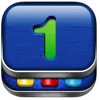Take a look inside 5 images
Native Numbers
Pros: Engaging, sequenced games do an impressive job of helping kids develop number sense.
Cons: Hints and feedback could be a bit more instructional.
Bottom Line: The app is on the pricey side, but it's a good investment and delivers high-quality games that promote a deep understanding of early math concepts.
Native Numbers is extremely visual and hands-on, so it's best suited for individual practice. Have kids complete one level at a time, and keep a leaderboard to track their accuracy and time. Then reinforce what kids learned by having them work in small groups with actual classroom manipulatives including number rods, number cards, numeral cards, and tally cards. Model the classroom group activity after the level that kids just completed. For example, if kids just finished the rods level in Number Ordering, have them order sets of rods from smallest to largest, and then from largest to smallest. Progress as the app does to sets, tallies, and numerals.
Native Numbers is a collection of interactive math games that teach young learners about number sense. A teacher dashboard is available on the developer's website, where users can sign up to track the progress of up to four players. Community achievements are listed and continuously updated on the left side of the home screen. When kids tap play, they are taken to a screen that lists all of the available levels, which are grouped by core concepts. There are five core concepts, five levels in each concept, and several interactive activities built into each level. As kids complete the activities, the app tracks accuracy (in percent) and time. These are good motivators, but it would be more helpful if kids could see age-appropriate scores such as number correct and number incorrect. Kids earn trophy seals for completing each level.
The instructional design of Native Numbers is impressive. Four core content areas are covered, with a fifth area designed as a challenge for kids to apply what they learn. The core areas are Number Concepts, Number Relations, Number Ordering, Counting, and Demonstrate Mastery. Learning builds on concepts from previous levels and core areas, which helps kids develop a strong conceptual understanding of numbers. For example, in Number Concepts, kids start by identifying number rods based on their lengths and colors. They are given random groups of rods and are prompted to touch a specific rod that represents a number. In the next level, kids identify numbers based on the number of objects shown on a card. Next, kids drag to match rods with items that represent the same value. Items can be other rods, cards with objects on them, or numeral cards. As kids progress to other core areas, they learn how to compare numbers using words, order numbers, and count. The final core area, Demonstrate Mastery, is an excellent way for kids to apply and assess their learning. And if kids find that they need more practice, they can go back and play any of the games again. Overall, this app is fun and engaging, and learning progresses with carefully sequenced games that help build solid math skills.













